Discover how many drops of water fits on a penny in this simple and easy science experiment. Your kids will be shocked at how many drops of water can a penny hold due to surface tension!
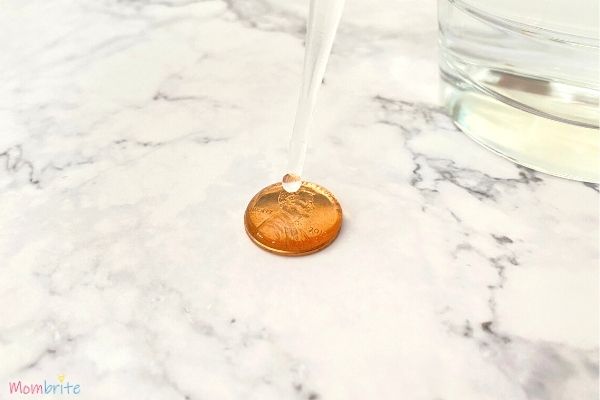
How many drops of water can fit on a penny?
If you ask your child how many drops of water they think will fit on a penny, they will probably respond with a low number. After all, a penny isn’t that big, so it’s not obvious that a coin can hold that much water.
This drops of water on a penny science experiment will amaze your kids and teach them about surface tension. There are also a lot of science extensions you can do to make the experiment even more interesting. Don’t be surprised if your kids want to squeeze drops of water on all the coins in your house after this experiment!
This simple experiment is easy enough for preschoolers to do, though you will need to monitor closely to make sure they are not squeezing too much water out of the dropper at once. Kindergartners and first graders should be able to do this experiment with minimal help.
If you are doing this experiment in a classroom setting, you can also tally up the number of drops on the penny for all the students and calculate the average. It would be interesting to see if everyone got around the same count!
Drops of Water on a Penny Science Experiment
Supplies:
- Free drops of water on a penny experiment worksheet
- Penny
- Water
- Dropper or pipette
- Small container
- Optional: paper towel
Instruction for Penny Drop Experiment:
1. Place your penny on a flat surface. If you are worried about getting water on the table or the floor, you can place a paper towel underneath the penny.
2. Pour some water in a small container.
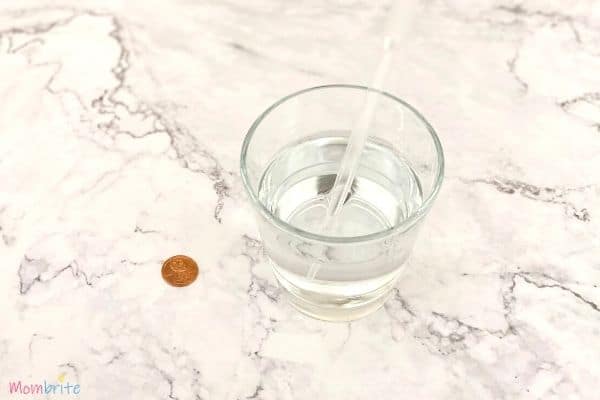
3. Ask your child to predict how many drops he or she thinks will fit on the penny. Record the hypothesis on the worksheet.
4. Use a dropper or pipette, suck up some water and carefully start dropping the water on the penny. Make sure to count as you go!
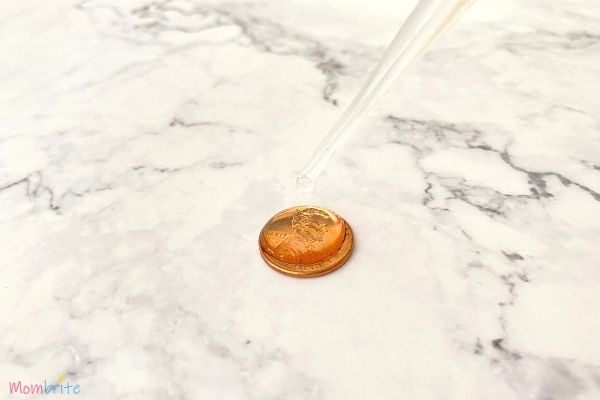
5. When the water spill over, stop counting.
6. Record how many drops of water ended up fitting on the penny on the worksheet. Was the hypothesis close?
I explained to my son that water likes to stick together. Just as I was about to describe surface tension, he lost focus and squeeze a drop of water right next to the penny but on the floor. As a result, the water on the penny spilled onto the floor.
Instead of being disappointed, he took the opportunity to explain to me that the water that he dropped on the floor pulled the water on the penny off since water like to stick together. I was so proud that he made this observation!
Science Behind drops on a Penny Lab Experiment
Water molecules like to be around other water molecules, just like you like to play with your friends. When water drops fall, they like to get as close to each other as they can. It is kind of like they are giving each other a hug and holding hands. That is why you have a puddle on the ground when it rains, instead of a whole bunch of raindrops!
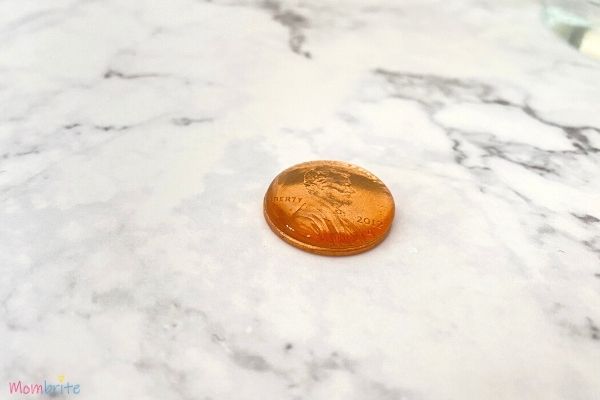
This special hug has a special name, cohesion. Cohesion means that water likes to be close to water. When the water gets close it forms a rounded shape like a bubble. This round shape stays tall and solid because of something called surface tension. Surface tension is the way the molecules hold on to each other to stay close.
To make this drops of water on a penny science experiment even more interesting, you can try using different types of liquids to see if you end up with the same count. Try vinegar, fruit juice, honey, and oil. Make sure to ask your kids questions about their hypothesis and why before conducting the experiment.
You can also try this experiment with different coins! Does the dime hold less water than the nickel because the dime has a smaller surface area? How about in comparison to the penny?
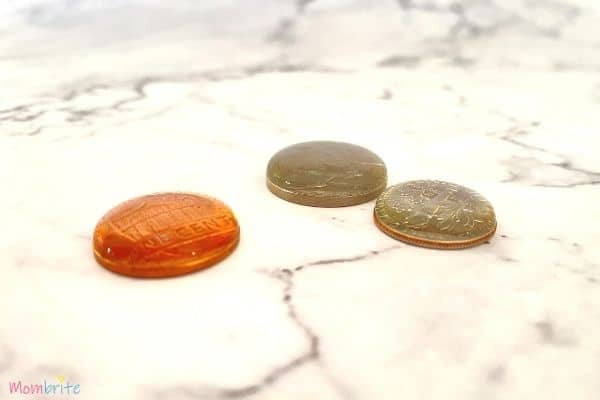
How Many Drops of Water can Fit on a Penny?
The answer to how many drops of water can fit on a penny will vary depending on the dropper you use and the pressure with which you squeeze out the water. If you squeeze harder, your water droplets may be larger, and therefore you will end up with a smaller number of drops.
When my son and my daughter tried this experiment, we all got different results. The numbers weren’t too far off, but they were all different nonetheless.
I counted 35 drops of water before the water spilled over. How many did you get?
Related Posts
